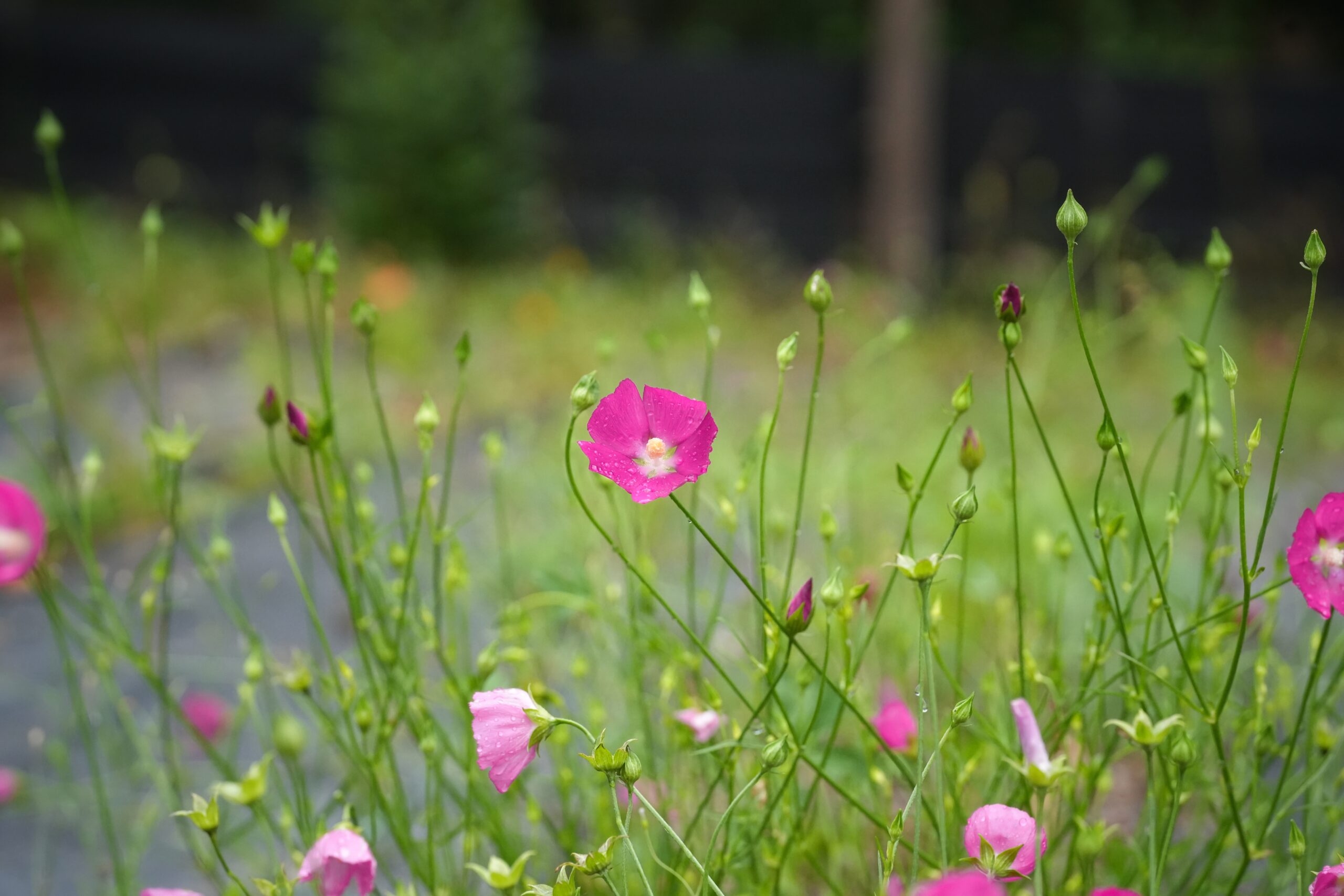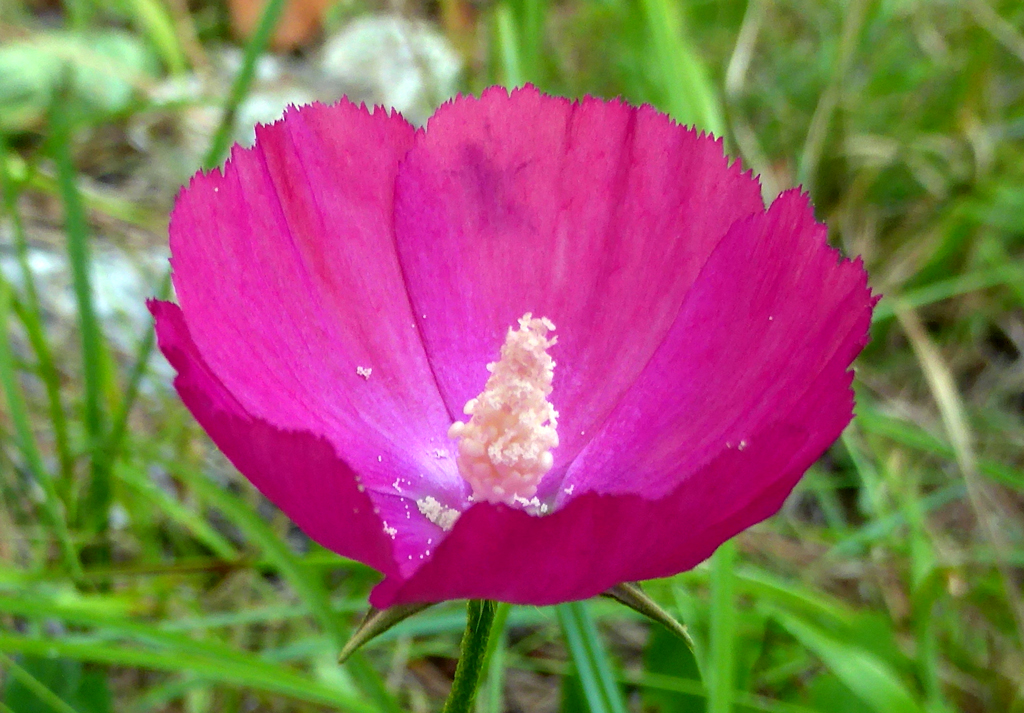Woodland poppymallow
Pictured above: Woodland poppymallow (Callirhoe papaver) by Emily Bell. Click on terms for botanical definitions. View post as a PDF.
Woodland poppymallow (Callirhoe papaver) is one of our most unique native wildflowers, with cup-like crimson blooms that resemble a challis of red wine. These striking flowers attract a variety of bees, which are their primary pollinator. The plant is also the larval host of the Checkered skipper. Woodland poppymallow is endangered in Florida, occurring naturally in upland mixed forests and dry hammocks in only four counties.
Flowers are large (2–3 inches in diameter) and five-petaled, each with a white base. They are subtended by a five-lobed calyx and three bracts. Flowers are solitary and born atop flat, slender stems that emerge from a basal rosette. Stems may be prostrate. Stem leaves are palmately lobed, with three to five linear or elliptic segments and long petioles. They are alternately arranged.
The genus Callirhoe was named after the Greek Oceanid Callirhoe and means “beautiful flow.” Despite the common name and the flower’s similar appearance, Woodland poppymallows is not a true poppy, which is a member of the Papaveraceae family.
Family: Malvaceae (Mallow family)
Native range: Alachua, Gadsden, Jackson and Leon counties
To see where natural populations of Woodland poppymallow have been vouchered, visit florida.plantatlas.usf.edu.
Lifespan: Perennial
Soil: Dry, well-drained sandy soils
Exposure: Full sun to partial shade
Growth habit: 1–2’ tall and sprawling
Propagation: Seed
Florida regions of landscape suitability: North
Garden tips: Woodland poppymallow is easy to grow under the right conditions and does not require much attention once established. It is drought tolerant and may be deciduous in winter.
Woodland poppymallow is occasionally available from nurseries that specialize in Florida native plants. Visit www.PlantRealFlorida.org to find a nursery in your area. Seeds are sometimes available from the Florida Wildflower Growers Cooperative.
Learn more about Woodland poppymallow from the Florida Native Plant Society and the Institute for Regional Conservation.


